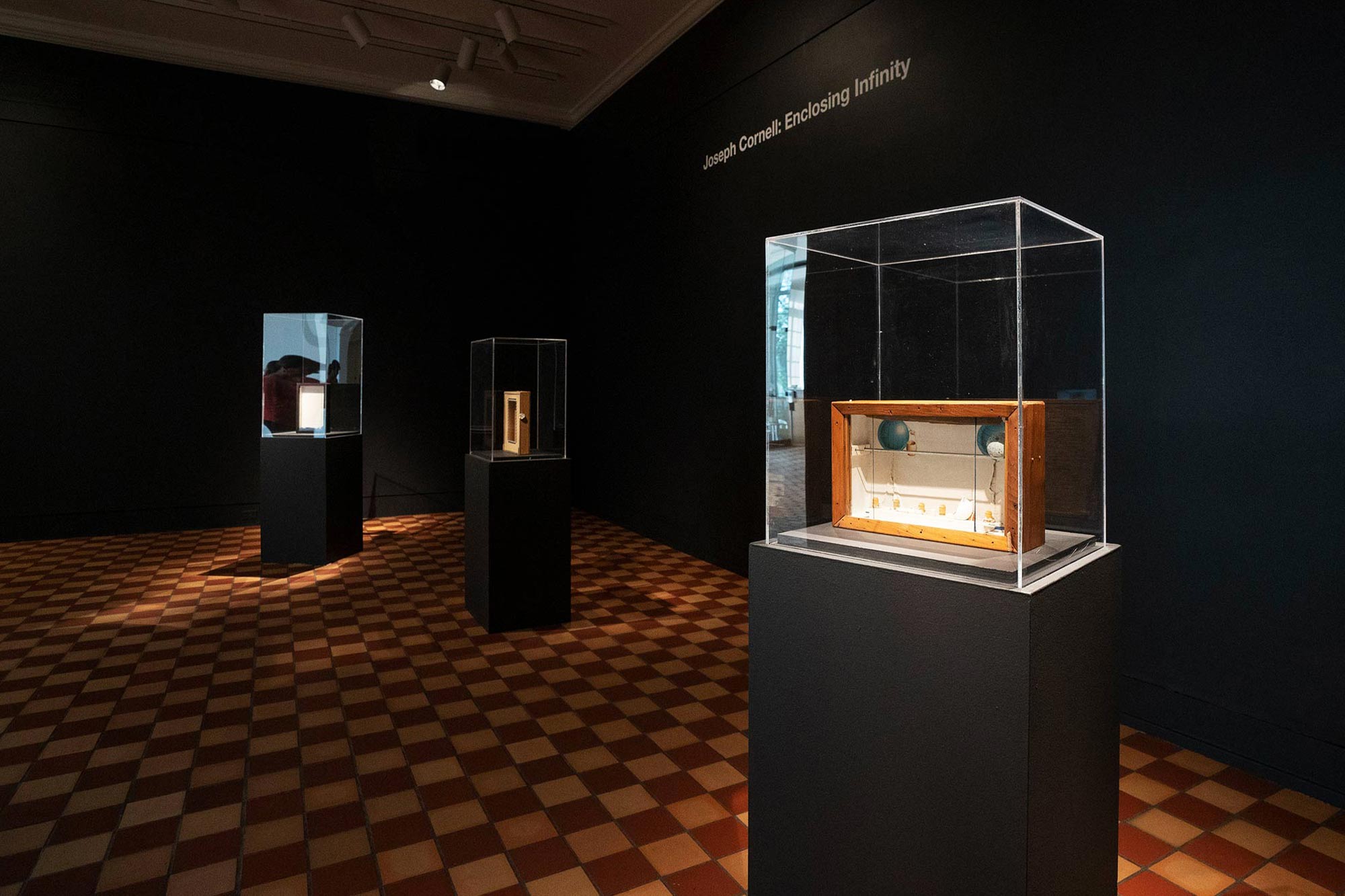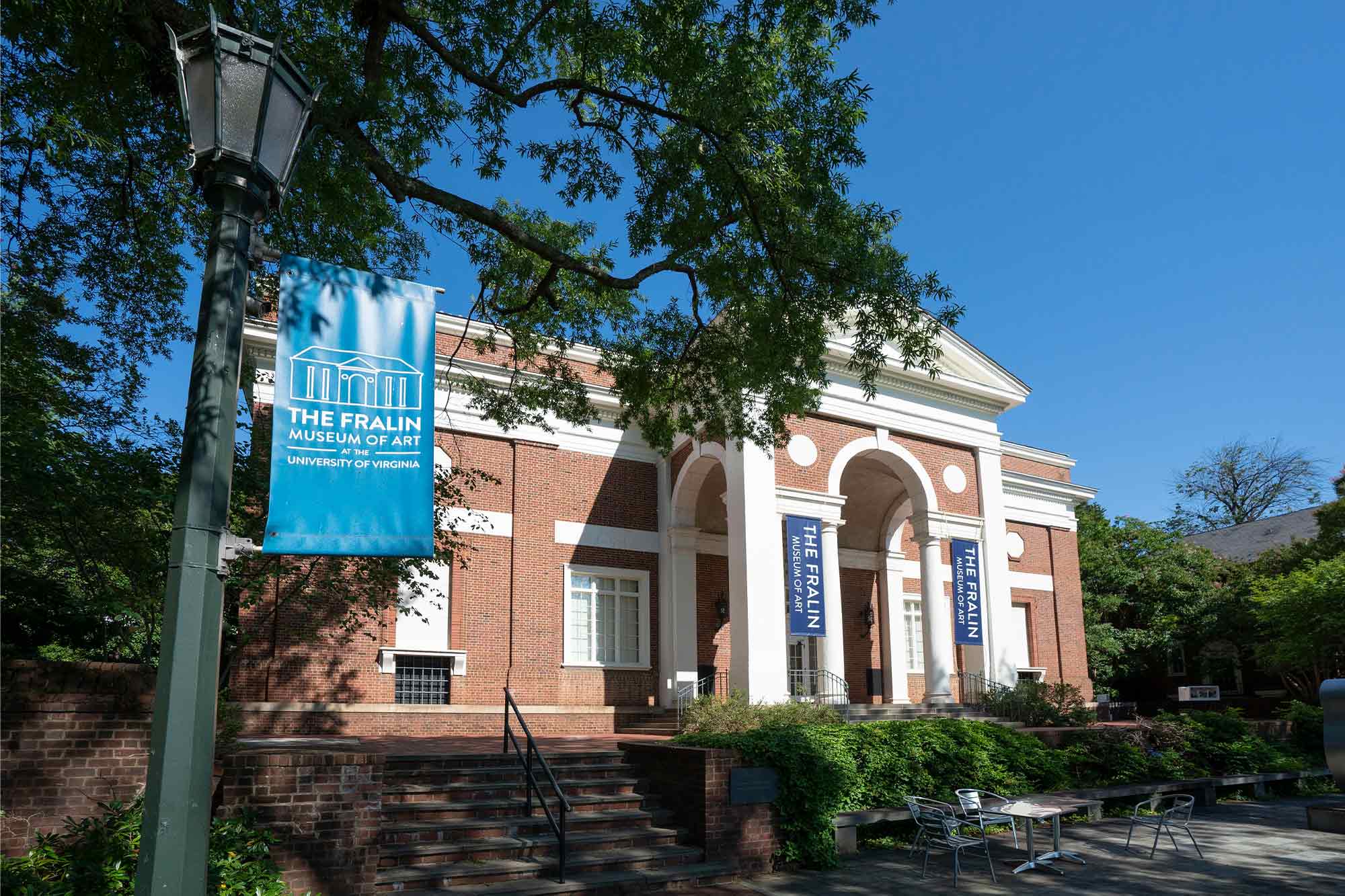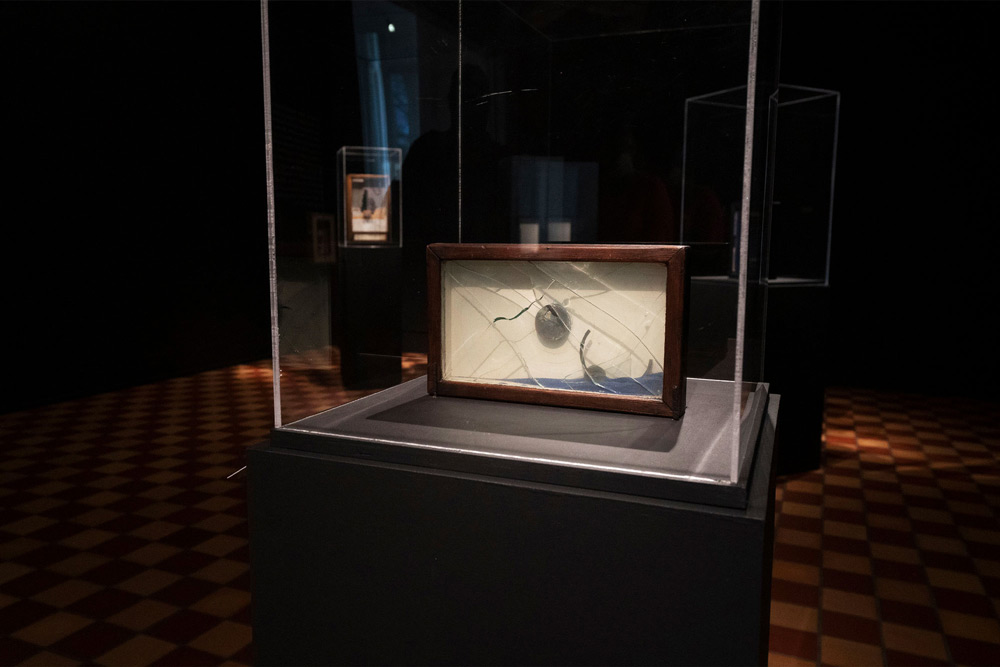The shadow boxes each contain a few items – a broken toy or a red rubber ball, a blue and white pottery shard or a row of tiny hooks, a seashell or a stone, tossed in a bed of blue sand or set with newsprint as a background.
Each box evokes fragments of dreams or summer memories, an alley far away or a carnival in the past, a trip in the imagination.
Joseph Cornell, an influential 20th-century American artist who died in 1972, used to wander around New York City where he lived, going to all kinds of shops – dime stores, used booksellers and secondhand shops – looking for small objects that struck his fancy or interested him in some way. He arranged them in wooden boxes, about the size of a shoebox, with other materials like sand, creating each one as if offering a small, mysterious world.






